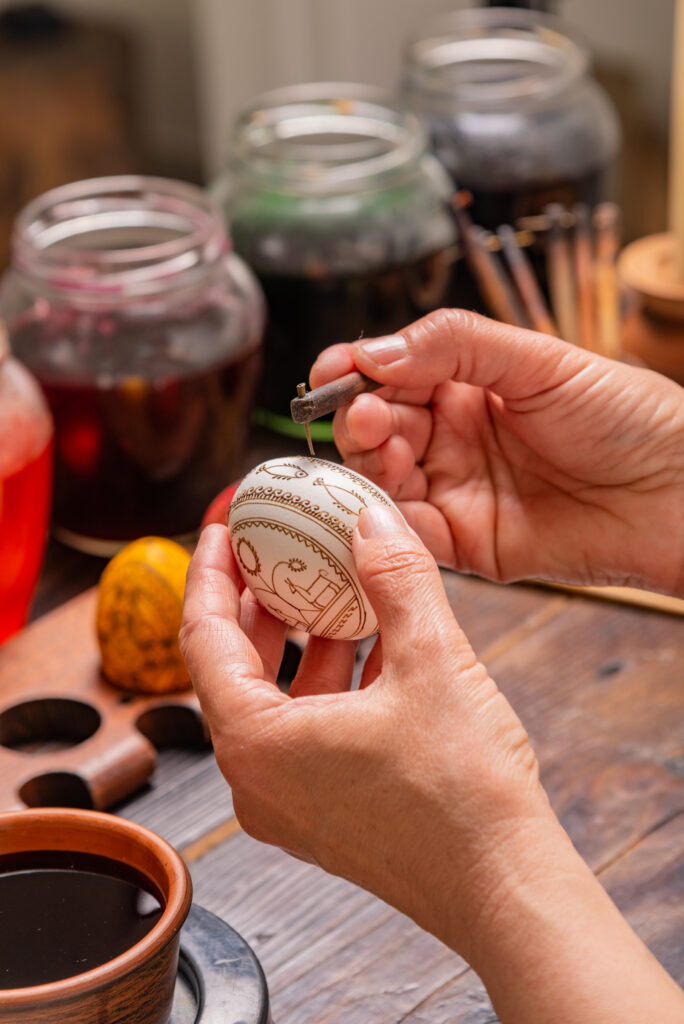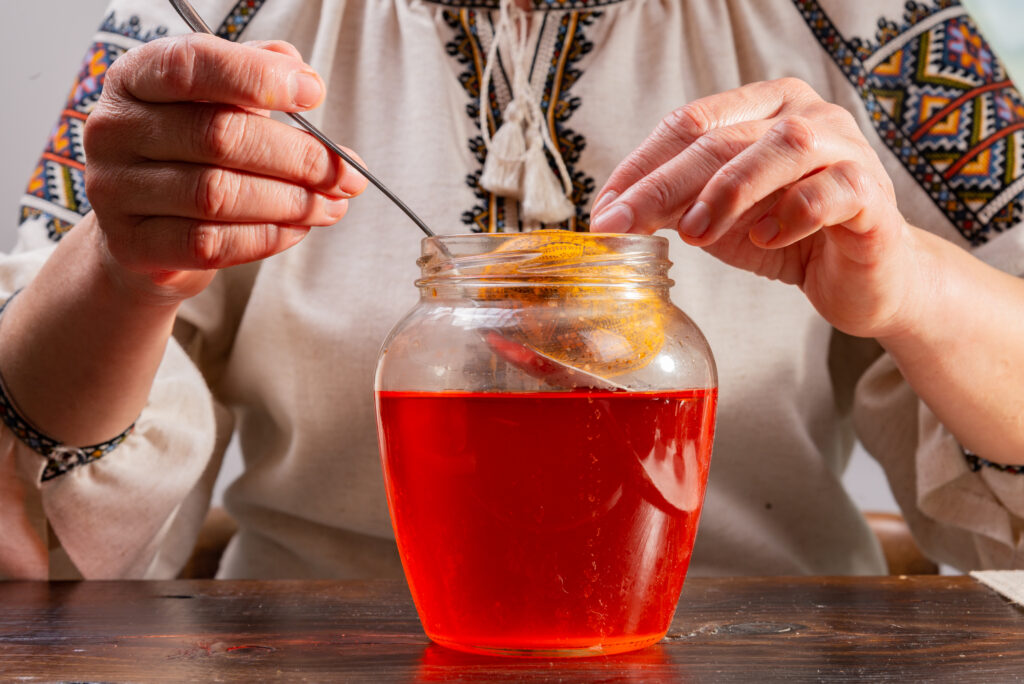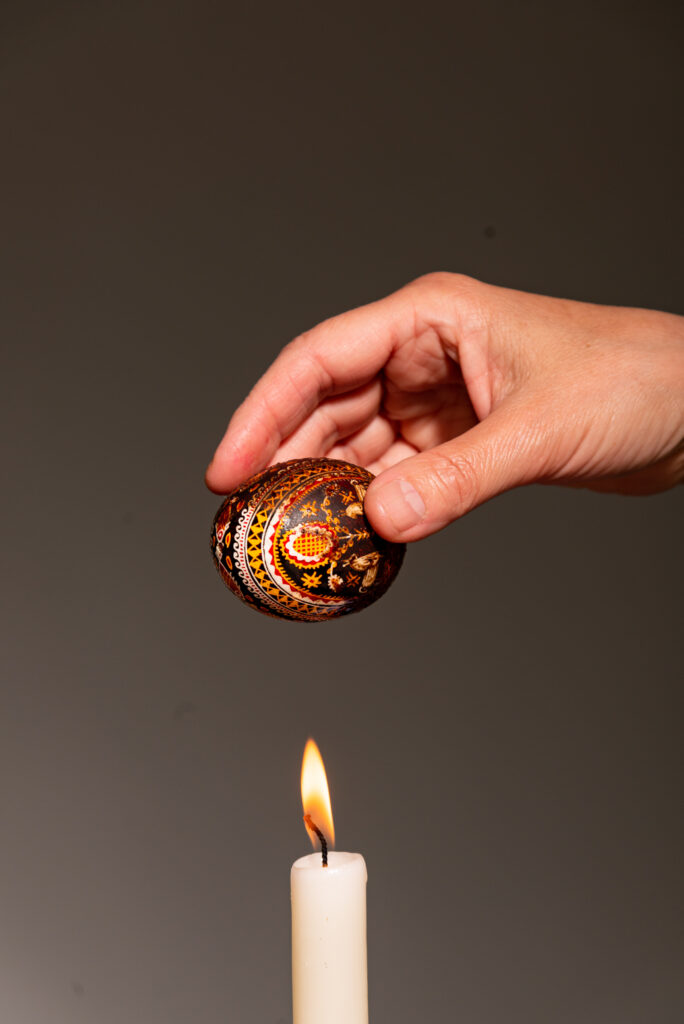Artist Lesia Pona remembers Easter mornings during her childhood in Lviv, Ukraine, linking arms with her mother, and holding a basket filled with pasqua (Easter bread) and “newly written” pysanky, waiting to be exchanged outside church to see which egg was “brighter, colorful, and more detailed … [a memory] so very sweet.”
The Art of Pysanky
Pysanky––wax-painted Ukrainian Easter eggs––comes from the word pysanty meaning “to write.” Dating back to ancient times, Lesia says, “Our ancestors believed that the fate of the world depends upon the pysankas. As long as the egg decorating continues, the world will exist. With the advent of Christianity, the symbolism … changed to represent not the rebirth of nature, but the rebirth of man.”

Step 1: Painting with the hot wax. A pysanka is “written” with a pysak, or stylus using beeswax melted over a hot flame.
Traditional colors used to paint the eggs are yellow, red, orange, and green on a dark brown or black background. Typical symbols are “written” in the Pokuttya region where Lesia lives and works are spirals, representing life and death; birds and other animals (spring); and dots, which “once represented stars, but became symbols of the tears of the blessed Virgin.” Before Christianity came to Ukraine, pysanky were believed to bring good luck and fortune to the homes where they were created and received, possessing talismanic powers.

Step 2: The dyeing process. Lesia says, “Today artists mostly use aniline dyes, but sometimes also natural ones made from local plants. Natural dyes have better color saturation and light-fastness.”
How to Make Pysanky
Painting a pysanka involves a wax-resistant method using a pysak or stylus made out of a thin brass piece wrapped around a needle, forming a hollow cone. The pysak is then attached to a small stick with a wire. Next, beeswax is scooped into the pysak and heated over a candle flame (or more commonly now, an electric heater), melting the wax for the designs to be created.

Step 3: The wax is then removed over a candle flame. If kept away from direct sunlight, a pysanka can last for years.
Lesia stresses that this is the most important moment. “The first contours determine the future pattern,” she said. “It is often divided into a number of vertical, horizontal or diagonal stripes. Depending on the option they can create a variety of combinations.” The egg is dyed and more wax applied. In the final step the wax is removed “by holding the egg next to the candle flame, and it’s really kind of magic––when one can see through the disappearing wax [and find a] beautiful, bright ornament.”
Story by Lesia Pona with Lisa Toboz
Photography by Dave Bryce
Subscribe to TABLE Magazine‘s print edition.
